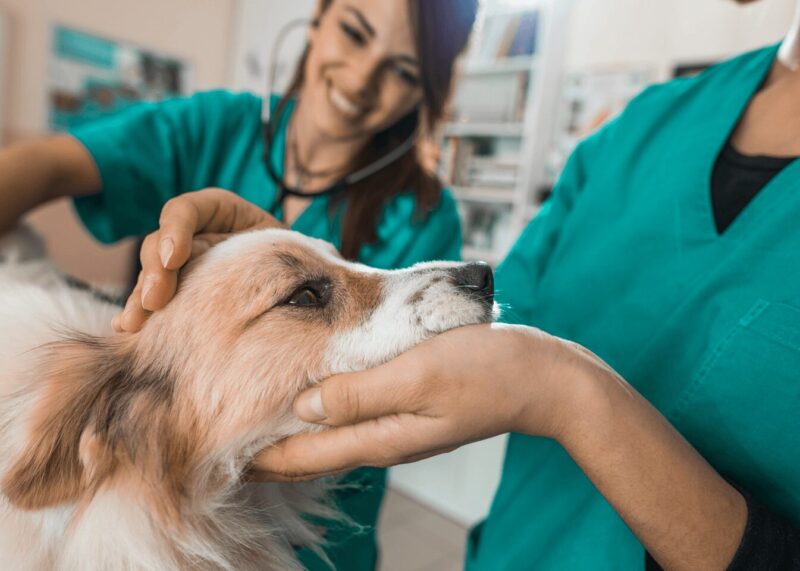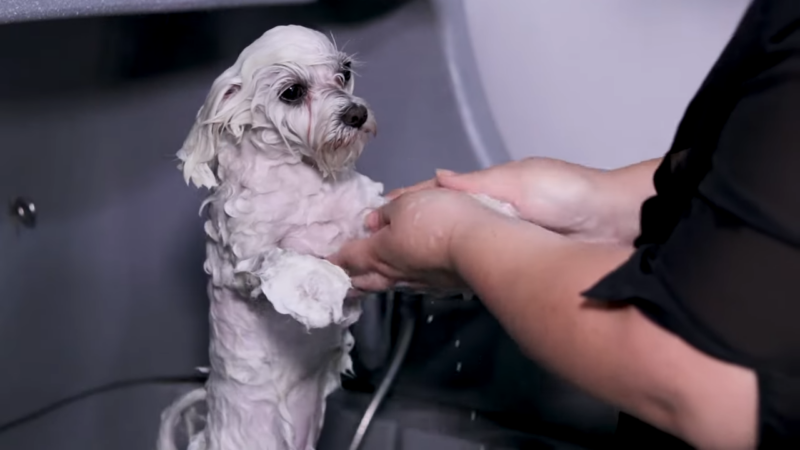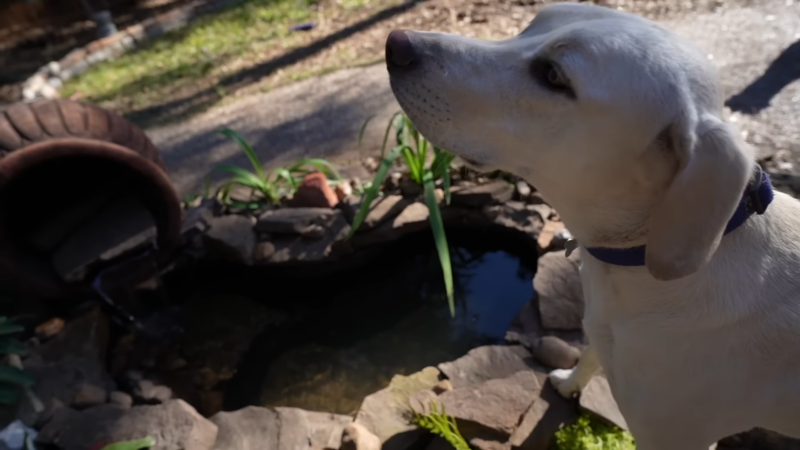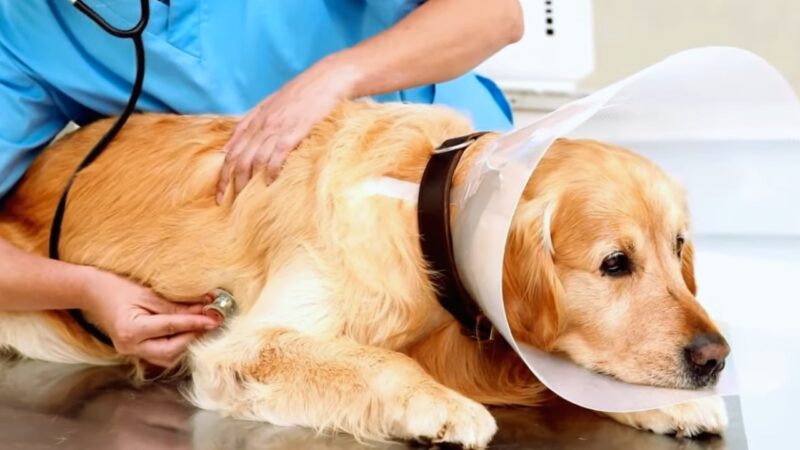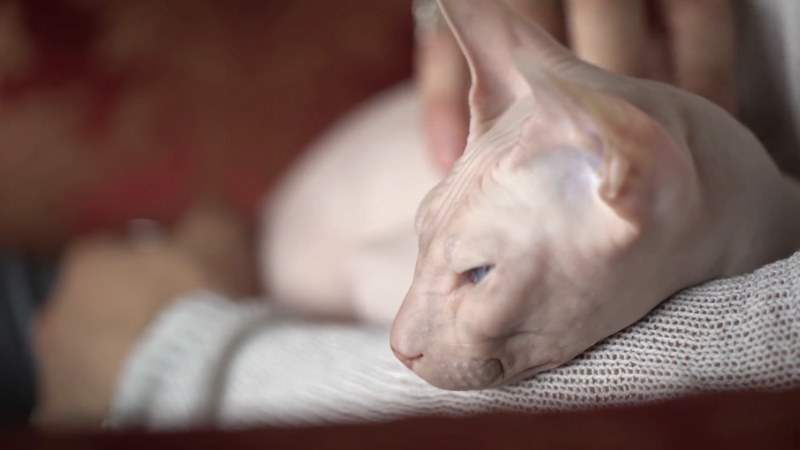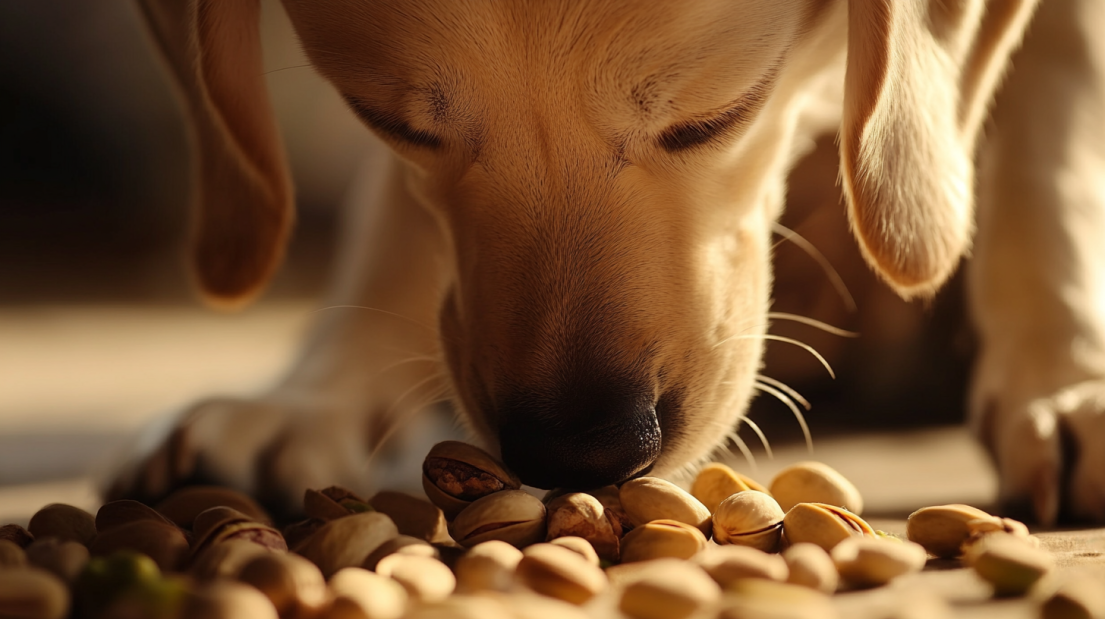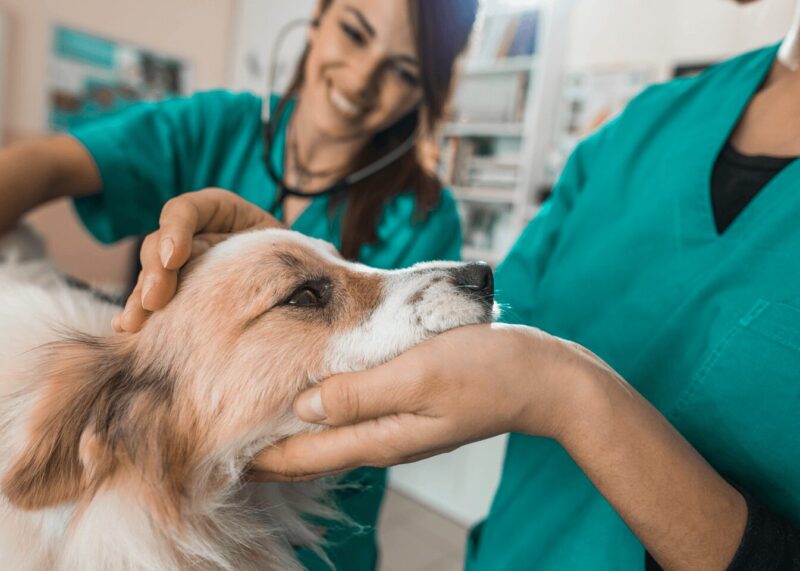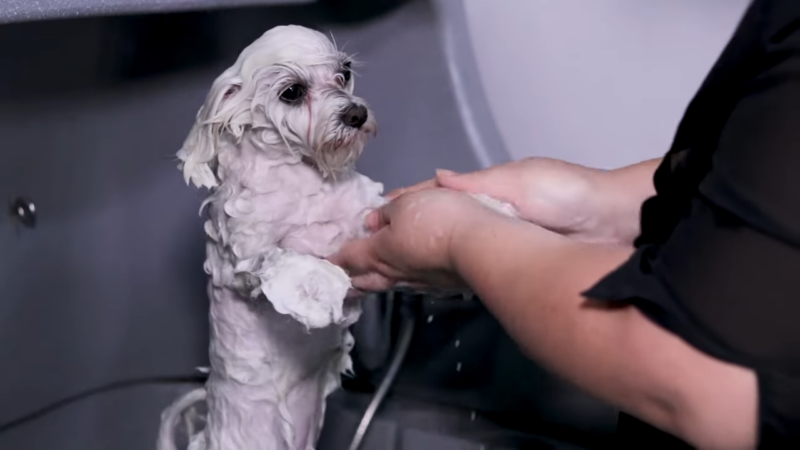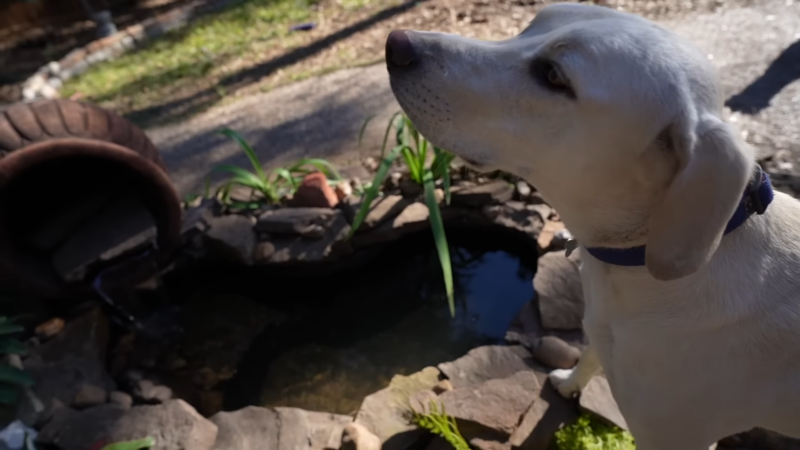
-
 Anita Kantar
Anita Kantar
- Published:
- Updated: April 16, 2024
- Category: Pet Health and Care
Share Post:
For many of us, pets are our loyal companions, our friends, and a significant source of unconditional love. Their departure leaves a void that’s hard to fill.
In this article, we’ll go through the process of grief, offering tips and insights to help you cope, understand your feelings, and eventually find a way to heal. I personally used a few of these tools to help me deal with the death of my dog, Bailey.
Key Takeaways
Why It Hurts so Much?
Because it’s a natural reaction given the uniqueness and depth of the relationship you shared. The loss of a pet can disrupt your daily routine and diminish your sense of purpose. For those who live alone or rely on a pet for physical or emotional support, the consequences can be even more severe. You should know that grieving for a pet is a deeply personal experience and it can differ significantly from one person to another.
When they pass away, it is normal to experience a range of emotions, from sadness and anger to guilt and loneliness, because grieving is a non-linear process. You must go through the entire grieving process, which requires you to validate all of your emotions.
Did you know? 85% of pet guardians report loss and grief symptoms comparable to the loss of family members, with a third of pet guardians continuing to grieve at six months, and almost a quarter still grieving after a year
What Does the Grieving Process Look Like?
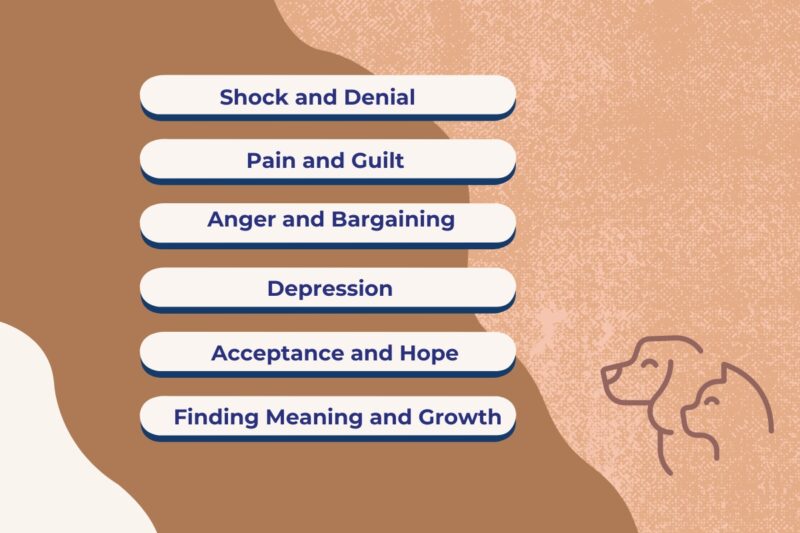
As previously stated, grief does not follow a linear path, so not everyone will experience all stages or progress in the order outlined here. Yet, understanding these stages can help you cope with your grief more effectively. Here’s a closer look at each step:
Shock and Denial
- Initial reaction: The immediate aftermath of your pet’s passing often brings shock and disbelief. You might find it hard to accept that your pet is no longer with you.
- Coping Mechanism: Denial serves as a defense mechanism to soften the immediate blow of your loss. It can manifest as numbness or a refusal to discuss your pet’s death.
Pain and Guilt
- Emotional pain: As the shock wears off, it’s replaced by profound sorrow and pain. This stage is particularly challenging because it confronts you with the reality of your loss.
- Guilt: You might also experience guilt, wondering if you could have done something differently to prevent your pet’s death or questioning your decisions regarding their health and care.
Anger and Bargaining
- Searching for blame: Anger can direct itself in various ways—towards the vet, yourself, or even the circumstances that led to your pet’s passing. It’s a natural response to feeling powerless and hurt.
- Bargaining: You may find yourself replaying “if only” and “what if” scenarios in your mind, wishing for a way to go back and alter the outcome.
Depression
- Deep sadness: As the reality of living without your pet settles in, you may experience intense sadness, loneliness, or even symptoms of depression. This stage is marked by withdrawal from social activities and a lack of interest in previously enjoyed pastimes.
- Acceptance of grief: It’s important to understand that feeling depressed is a normal part of grieving. It reflects the depth of your love and bond with your pet.
Acceptance and Hope
- Adjusting to reality: Gradually, you’ll begin to accept the loss of your pet, acknowledging the reality of their absence. This stage doesn’t mean you’re no longer sad about the loss, but rather that you’re finding ways to live with it.
- Looking forward: Acceptance paves the way for hope. You’ll start to remember your pet more fondly without being overwhelmed by pain. It becomes possible to consider the joy they brought into your life and the possibility of loving another pet in the future.
Finding Meaning and Growth
- Personal growth: Some people add this unofficial stage, recognizing that through grief, they’ve gained new insights into love, loss, and resilience. You might find a new sense of strength or purpose, perhaps in advocating for animal welfare or supporting others who are grieving.
- Legacy of love: Finding meaning in your loss can lead to a deeper appreciation for the time you had with your pet and a desire to honor their memory in meaningful ways.
How to Deal with Grieving Process?
Accept the Grief
The first step is acknowledging the loss of your pet and recognizing your right to grieve. Accepting that your feelings of sorrow are valid sets the foundation for your healing journey.
Feel the Emotions
Allow yourself to feel the full range of emotions that come with grief—sadness, anger, guilt, or even relief if your pet was suffering. It’s important to let these emotions surface and to experience them fully.
Share Your Grief
Talk about your feelings with friends, family, or a support group who understand the loss of a pet. Sharing can provide comfort and lessen the weight of your grief.
Experience the Ups and Downs
You may have good days followed by difficult ones. This is a normal part of the process, and each day moves you forward.
Find a New Normal
As time passes, you’ll begin to adjust to life without your pet. This may involve creating new routines or finding new ways to fill the space your pet once occupied.
Continue Bonding
Finding ways to maintain a spiritual or emotional connection with your pet can be comforting. This might involve talking to them, keeping their pictures around, or celebrating their life annually.
Allow New Connections
In time, you might find yourself ready to consider forming new relationships with pets. This is a sign of healing and an understanding that while your lost pet is irreplaceable, you have more love to give.
What Can You Do to Make Your Grief Easier?
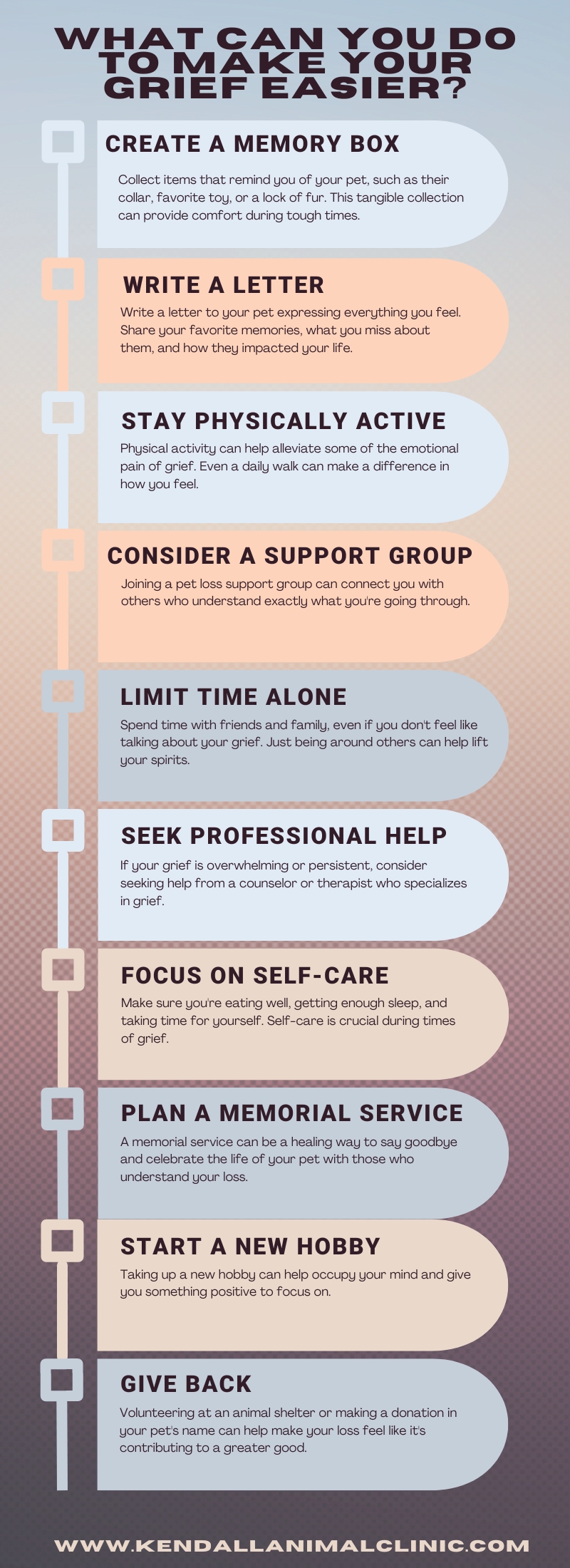
How Children Deal with Pet Loss?
The loss of a pet can be a heartbreaking experience for a child, often presenting their first experience with death. It’s a crucial moment that calls for a sensitive approach by parents and caregivers.
Did you know? According to a study published in the Journal of Child Psychology and Psychiatry approximately 40% of children experience pet loss by the age of 6.
Children process grief differently at various developmental stages, and their reactions can differ. While a younger child may not completely understand the permanence of death, older children might experience a grief that mirrors that of adults, complete with sadness, anger, or even guilt.
What Can You Do to Help?
- Be honest and clear
Use simple, clear words to explain what happened. You might say something like, “Fluffy won’t be with us anymore because her body stopped working. It’s okay to feel sad because we miss her.” Avoid using phrases like “gone away” or “sleeping” as these can confuse young children about the permanence of death.
- Encourage questions
Allow children to ask questions and be as open and honest in your responses as possible. This helps them understand and process their feelings.
- Acknowledge their grief
Validate their feelings by acknowledging that sadness, confusion, or anger is normal when we lose someone we love.
Tips for Supporting Children
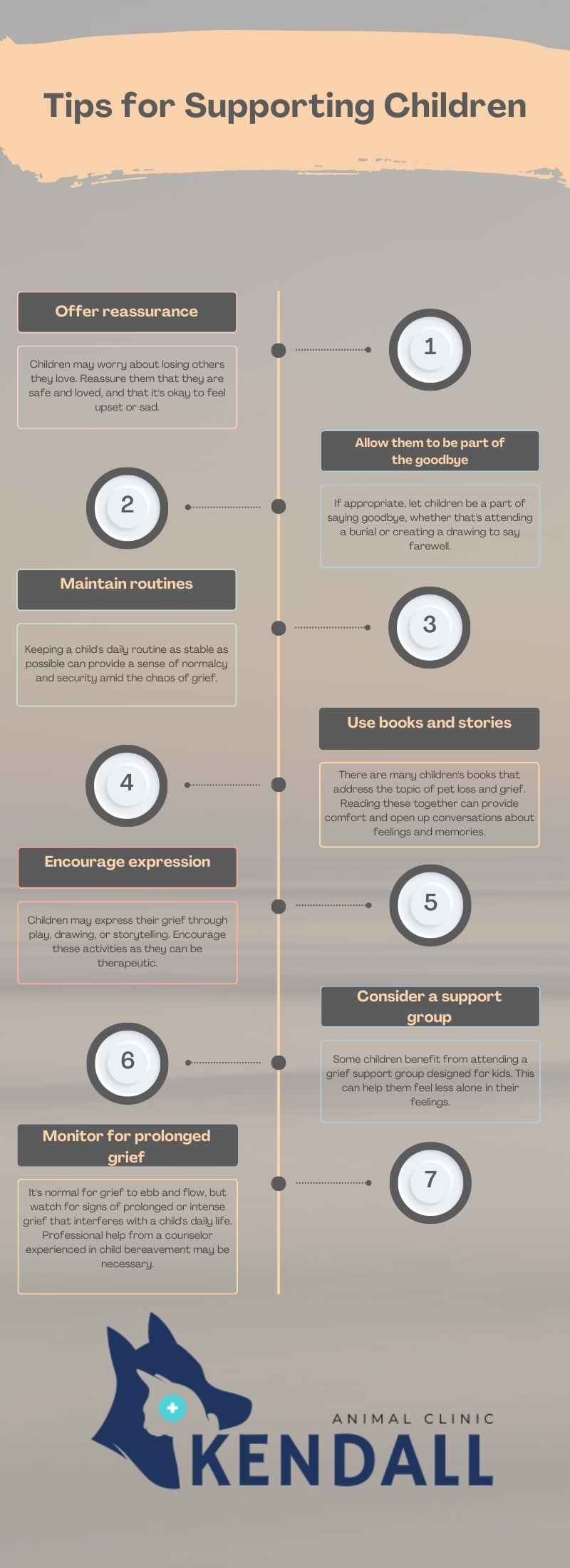
When to Consider a New Pet?
This is a personal choice that should be made when you feel ready, not as a means to quickly fill the void left by your previous pet. Some people may need a few months, while others may need years.
It’s okay to take your time.
Each pet is unique, and a new pet doesn’t replace your old friend but offers a chance to form a new, loving bond.
FAQs
Conclusion
The loss of a pet is a devastating experience, filled with emotion and sadness. It’s a process that’s unique to each individual, and there’s no right or wrong way to deal with it.
Remember, it’s okay to grieve, to cry, to feel angry, or lost. It’s also okay to laugh, to find moments of joy, and to remember the love and happiness your pet brought into your life. With time, support, and self-care, the pain will soften, making way for the precious memories that will forever remain in your heart.
Related Posts:
- Can Hamsters Eat Mushrooms? The Ultimate Guide to…
- Preventing and Treating Blackheads in Dogs ─ Ultimate Guide
- Can Hamsters Eat Cabbage? A Guide to Healthy Eating
- Can Hamsters Eat Bell Peppers? - A Nutritional Guide
- Why Is My Dog's Skin Pink? A Comprehensive Guide
- When to Groom Your Goldendoodle Puppy - A Beginner's…


